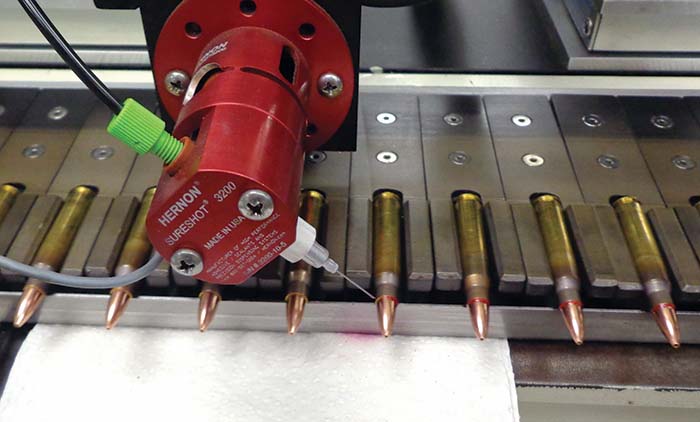The mouth/primer sealing machine. This is the application of sealant to the mouth of the cartridge case.
By Christopher R. Bartocci
Black Hills Ammunition (BHA) is one of the most recognized names in the industry for premium quality ammunition for hunting, self defense, law enforcement and military customers. The true niche for Black Hills’ products is custom, precision and high quality ammunition. The biggest customer for BHA is the U.S. military. They manufacture perhaps the most regarded and well known 5.56mm cartridge, the Mk262 Mod1, in use by SOCOM. Black Hills Ammunition manufactures several other custom combat loads for various other U.S. military units. The quality of BHA is second to none; they do not compete in most orders requiring the lowest bid. They have extreme pride in their quality of ammunition and are not willing to take away the man hours of inspections of components and final ammunition to compete in low bids. They have no desire to be known as the low bid/low quality manufacturer. However, this keeps them out of the law enforcement market due to the fact that almost all law enforcement contracts go out for bid. Generally due to budget restraints, the main concern is cost and over-all reliability. The military on the other hand has the opposite view on ammunition. They have exceedingly high standards and are willing to pay for the best ammunition in the world. They also have many different missions requiring specific needs. This is where BHA comes in. There are no engineers at BHA as they are an assembly plant not a design firm. When Jeff Hoffman is presented with a requirement, he seeks out the proper components. If those components don’t exist, he works with his suppliers (who he has more than 20-year relationships with) to custom design and manufacture that projectile or powder blend needed for that particular requirement. These close relationships with ammunition component manufacturers to develop new and improved products have made Black Hills Ammunition one of the highest quality manufacturers of ammunition in the world.

Small Arms Review was granted a rare inside look at the Black Hills Ammunition manufacturing plant in Rapid City, South Dakota. We were taken from the R&D labs right into the production and quality control areas. The facility was converted from a dairy plant and was well suited for the needs of BHA. There is a main manufacturing plant along with an additional storage facility and primer and powder storage containers that all conform to U.S. Department of Defense (DOD) regulations for storage of powder and primers. Like any U.S. DoD contracting location, security is very strict with many levels of restricted access areas. Not to be unheeded, the front door is guarded by a large overlooking gargoyle.
The first stop on the tour was the warehouse. The warehouse was loaded with projectiles of all sorts, primers and large caches of cartridge cases. The military production components are kept separate from the commercial. BHA purchases as much components as possible when they become available and will store them. In the last couple of years ammunition components have become quite scarce. BHA is an ammunition manufacturing facility and without components their loading machines sit idle. Every effort is made to keep enough stock so the chances of production being halted due to running out of components is left at a minimum.
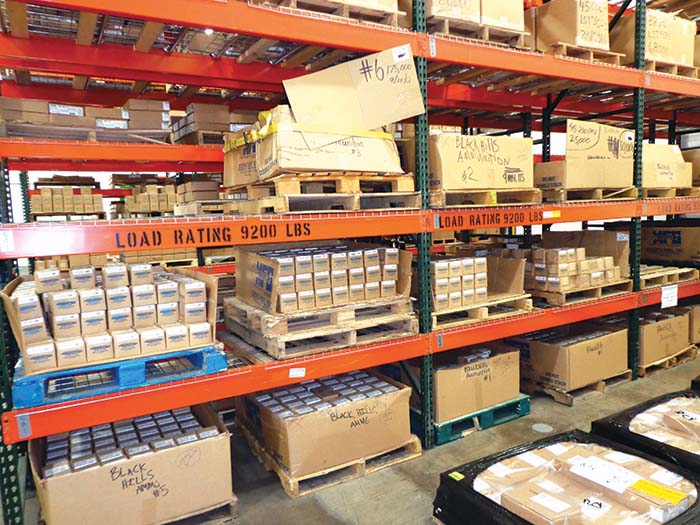
The second place Jeff Hoffman showed was one of the two ballistic laboratories used in the development and testing of ammunition. Proof barrels are installed in the main unit. Pressures, velocity and various environmental conditions can be tested. The test barrel is fired through three tires, then through three sky screens that capture velocity and the projectile is captured in a snail trap. These systems may be used for development of new products or to test various lots of ammunition to ensure it conforms to the specifications. There are two ballistic labs; one for commercial and one for military ammunition.
Next we were shown the Gel Room. This is a dedicated room for mixing and preparing ordnance gel in testing all types of ammunition. There are two large refrigerator units that are always filled with gel. There are various length molds as well. This is a critical testing procedure, particularly when manufacturing military ammunition. The gel also will give immediate feedback if the projectiles will maintain their weight or fragment as well as a very good visual regarding the permanent cavity damage the projectile will make.
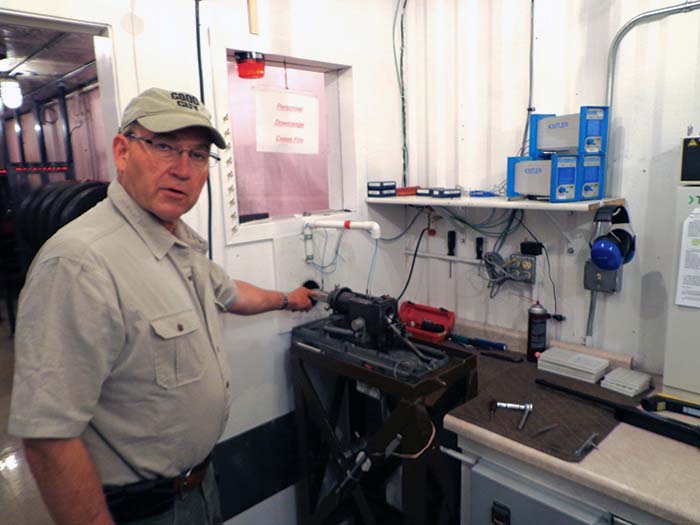
Due to Black Hills Ammunition manufacturing ammunition for military use, every effort is made to ensure the ammunition is combat reliable and as absolutely uniform lot to lot as is humanly possible. They have a humidity environmental chamber that is used to condition reference ammunition to assure the most accurate results possible in referencing Black Hills Pressure test barrels.
Quality control starts with each and every component. When your reputation depends on the performance of the ammunition, BHA does not take the word of their vendors that everything is within specification. BHA offers two different types of ammunition, new and factory reloads. In the case of the reloads, brass is accepted from sources which BHA is sure they are only once fired. Each fired cartridge case is visually inspected for serious scratches, damaged rims, bent mouths or any other anomaly that may make the cartridge case speculative of performance in a reloaded cartridge. New cartridge cases are inspected at the loading machine. Depending on the type of cartridge case, they may require priming or in the case of military ammunition, the cartridge cases may already be primed and have the primer pocket crimped. In the case of the primed cartridge cases, the loading machine operator will hand inspect each round prior to it going into the hopper of the loading machine. The slightest blemish on military contract ammunition will be rejected. One of the more common manufacturing defects noted will be the lack of uniformity or a missing flash hole. The new unprimed cartridge cases go through the same process but the additional step of priming is added to the assembly process.
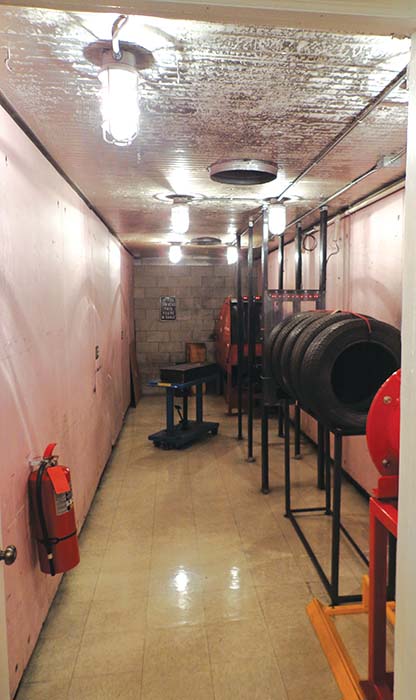
Primers go through inspection as well and there is a separate room where the primers are examined. Each primer is inspected to assure all three components are present (cup, anvil, firing mixture). Mostly Winchester primers are used exclusively by BHA. On very rare occasion a primer will have one or all of the components missing or the primer is assembled incorrectly. Although a very tedious process, this quality control measure guarantees to the extent possible, that the round will fire when struck by the firing pin. Once the primers are accepted, they are fed into a machine that loads the primer tubes (100 each) that are fed into the loading machines.
Bullets are also inspected. Due to the degree of accuracy required, projectiles are inspected and weighed to make sure they conform to the specification. Depending on the projectile type, they are checked to make sure that cores are complete and uniform. BHA uses numerous manufacturers of projectiles including Hornady, Sierra and Barnes to name a few as well as cast lead projectiles. Depending on the order, the projectile is procured. Much research and development is done on behalf of customers to find projectiles to meet a specific requirement. BHA will find that projectile and if it is not available they will work with the manufacturer to design and manufacture it for that customer.
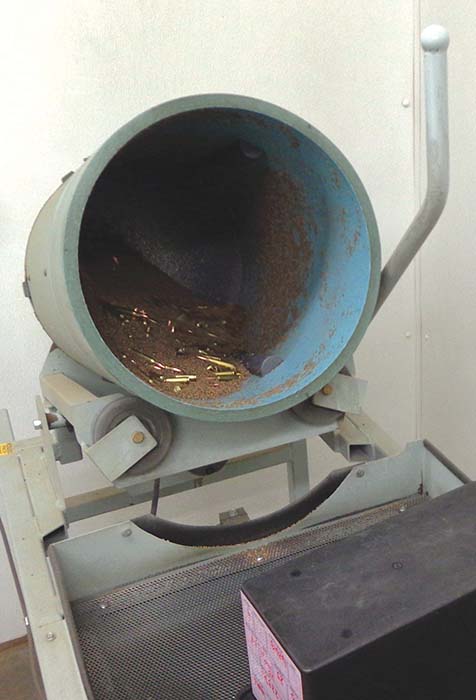
Propellants are another very critical component in the cartridge performance. Depending on the particular caliber, projectile weight and cartridge case, there are numerous propellants that may be used. The military has different requirements than a hunter. They will need flash retardants for nighttime firing. Some propellants burn faster and some slower. Modern propellants now can increase the performance of older calibers by the improved propellants that give similar or better performance with less volume of propellant. Military weapons offer their own set of challenges where propellants are concerned due to the need of both a certain chamber pressure but also a certain port pressure. Depending on the location of the gas port and the distance from the gas port to the muzzle, various propellants may be needed to control the pressure curve so as not to over or under pressure the operating system. As new requirements come up, BHA research and development people work with the powder manufacturers to design proper blends to accomplish the task at hand. The propellant used in the Mk262 Mod1 is a custom blended propellant just used in that cartridge.
The loading rooms are split into two different ones – one for military production and the other for commercial production. This is done for several reasons, with one of the most important being storage of proper components where they are to be used.
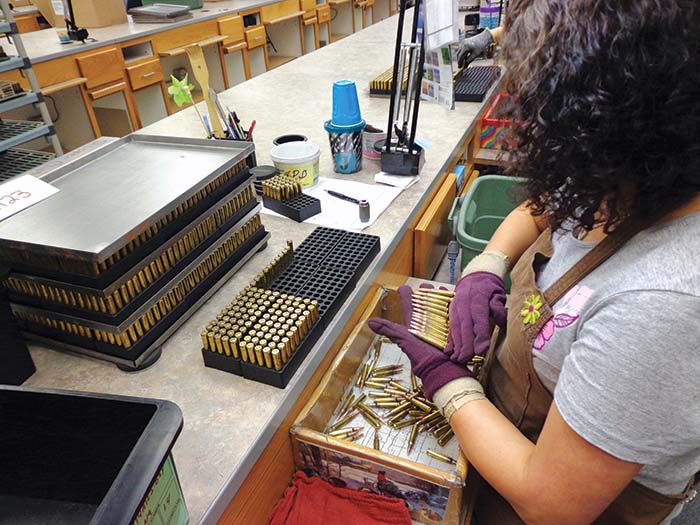
By industry standards, the BHA loading machines are quite slow, though that is just fine with Jeff Hoffman. The type of detail the machine operators must have could not be done as well with high volume machines. The operators are normally assigned to one loading machine. This is for several reasons; the most important is that the operator knows the machine completely. The operator can tell by the sound or feel if something is just not right. The operator is responsible for keeping the hoppers full of projectile, powder and cartridge cases and in other cases primers as well. However, at the same time they are inspecting every cartridge case that goes into the hopper and when the loaded cartridge comes out the loading machine. The cartridge is tested with calipers for overall length as well as chamber gauge. Throughout the day, one of the four managers goes to each machine, pull cartridges, inspects the powder charge, quality and lengths of the cartridges to ensure everything is right. There are also cartridge gauges that are inserted into the loading machine to check all the settings. There is a rigorous inspection of the loading machines to ensure the best product is being produced.
The loading machines are totally automatic with the operator just feeding in the components. In the case of military ammunition, the decapping and priming steps are skipped due to the cartridge case already having the primer seated and crimped. Some of the stations of the military production include length die, slight flaring of the mouth die, charging, dropping of the projectile into the mouth of the cartridge case, seating and crimping of the projectile.
After the cartridges are assembled and inspected, they go to the tumbling room. There are several tumblers with corn cob media to clean any contaminants or fingerprints off of the cartridges ensuring against corrosion of the cartridge. From this point on, the cartridges are handled with cotton gloves. Depending on the customer, most cartridges are left in for only a brief time so the annealing marks are not removed as per military specifications. In the case of commercial ammunition, these are often polished out. Once the ammunition is cleaned it is ready to be inspected one more time.
Also depending on the customer needs, some military ammunition is subjected to an additional primer and mouth sealant. This $300,000 machine is quite interesting. The cartridges are laid on a track. The first position, a needle located right on the cannelure drops some red sealant onto the cannelure at the mouth of the cartridge case. As the cartridge rolls on the track the sealant is evenly and lightly distributed around the full circumference of the projectile. The next stage is another needle that places sealant between the edge of the primer and the primer pocket. Again as the cartridge rolls on the track the sealant is evenly distributed around the circumference of the primer. The next stop is the cartridges are run under a UV light that instantly cures/dries the sealant. This process is unlike the standard Lake City Army Ammunition Plant sealing process. When you examine closely, the Lake City brass has purple sealant on the primer that often makes its way onto the face of the primer. The BHA process does not. It sits perfectly in the edges. On the Lake City ammunition, you see a black tar like mouth sealant and on the BHA it is a perfect round ring that will not affect accuracy or reliability. This process does add cost to each cartridge and is reserved for military customers whose ammunition will be exposed to the harsh environment that could kill a cartridge if left unsealed.
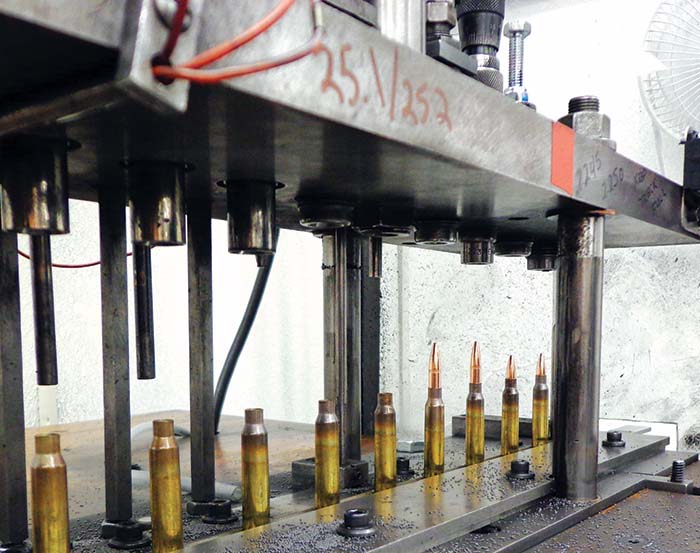
The next step is final inspection and packaging. This time an inspector with a fluorescently lit magnifying lens inspects each cartridge for any cosmetic blemish, e.g., a tool mark/scratch, dent or staining. If something is found the cartridge is removed and placed in a “seconds” bin. The seconds are sold as fully functional ammunition but with minor cosmetic flaws. Often this ammunition can go to manufacturers as function test ammunition or may be sold on the commercial market. In the case of pistol ammunition, the ammunition is placed in a tray that holds 50 rounds. There is a block placed over the rounds and the tray is flipped allowing the inspector to view each cartridge tip, then flipped over the base of the cartridge allowing for inspection of the primer. Everything is good, a packaging ammo box is placed on top, the tray is flipped and now the ammunition is ready to be slid into a box. One final quality check to go. The box of ammunition is placed on a scale which knows the exact weight that box is suppose to be. Even the slightest difference flags the inspector. This could indicate the lack of powder, or a defective projectile to name a few things. The box will then be removed and each round inspected until the problem is found.
Now the ammunition is placed into the box and then packaged into a case. The case is stapled, banded and ready to be shipped to the customer. Military ammunition goes on a different path after inspection. Depending on the contract, the ammunition may be placed in a 20-round box or the ammunition must be placed on stripper clips and three stripper clips placed in a box. The contract stipulates packaging, which usually consists of the ammunition being placed in an ammo can, two cans make a wooden crate and the crate sealed with metal wire. Ammunition for the U.S. military is picked up by the military in their own trucks unlike other ammunition finding its way out UPS or Fed Ex. If requested, ammunition can be manufactured in lots using the same lot components (cartridge case, primer, propellant and projectile). For instance, with match ammunition being used in competition or by snipers, they do not want to have to change the dope on their scopes to compensate for a different lot of ammunition. They are able to procure large lots of the exact same production ammunition.
There is essentially no inventory of ammunition at BHA as ammunition is made to order. As fast as it comes off the production line it is out the door to many different types of customers. One niche BHA enjoys is they are the largest supplier in the industry of proof ammunition for gun manufacturers. This ammunition is purposely loaded to 20% over normal pressure. Gun manufacturers use this ammunition at the factory to test new firearms to ensure the proof round does not damage the gun. The theory is that if the high pressure round is fired, any metal failure will present itself. All goes well and the weapon is not damaged the guns are shipped. In the case of military weapon manufacturers, often following a proof round being fired the barrel and bolt are inspected by means of magnetic particle inspection to see it there are any stress fractures. These proof rounds are manufactured for both rifles and pistols. Often they are identified by their silver colored cartridge case or in some cases the projectile is painted. Many different types of projectiles can be loaded in a proof round, it just has to conform to the proper projectile weight and it must not come apart when fired.
Black Hills Ammunition provides function test ammunition to numerous foreign and domestic firearms manufacturers. Any quality gun manufacturer will test fire their firearm for function and accuracy prior to shipping. This is often where the factory seconds will go but new manufactured ammunition is procured as well. This is another example of the trust the industry puts in Jeff and Kristie Hoffman’s hands.
The military ammunition is the largest part of the business as previously stated. BHA has been on the forefront with the development of several cartridges in use by American Warfighters. This includes the SOCOM Mk262 Mod1, the MK255 Mod1 as well as many custom loads for various military/government units. Jeff Hoffman’s expertise has led to advancements in the quality and performance of the 7.62x51mm M118LR PIP ammunition as well as advancements in .300 Winchester Magnum and .338 Lapua Magnum loads. BHA is also the manufacturer and co-designer of the ammunition used in the U.S. Army Marksmanship Unit, Air Force Marksmanship Unit as well as the Marine Corps Marksmanship Unit. BHA has some international military customers as well. These customers are more than often units who worked closely with U.S. Special Operations forces and saw the ammunition they had and decided they wanted the same ammunition. They would contact BHA and as long as all the export paperwork was in order they will ship to the foreign customers. This is and will remain the core of BHA business and center of focus.
Remanufactured ammunition is a good part of the Black Hills Ammunition lineup. They offer numerous .223 Rem loads as well as the .40 caliber pistol loads. The once fired brass is procured from agencies BHA works with and knows the ammunition was once fired. According to Jeff Hoffman, with the degree of quality control in the manufacturing process there is literally no performance sacrifice due to the once fired brass with the only real differences being a few scratches and an extractor and ejector mark that are just cosmetic. The remanufactured ammunition is packaged in blue boxes.
The newly manufactured ammunition is also offered in multiple calibers, for both rifle and handgun. Identified by the red boxes, this ammunition is manufactured with new cartridge cases: mostly Winchester and Lake City cartridge cases. Calibers offered are the basic military calibers including .223 Remington, 5.56x45mm, .300 Whisper/Blackout, .308 Winchester, .300 Winchester Magnum, .338 Lapua and .338 Norma Magnum. There are numerous types of bullets including Varmint Grenade, Hornady V-Max, Match Hollow Point, Full Metal Jacket, Soft Point, Barnes MPG, Heavy Match Hollow Point, Hornady and Sierra MatchKing OTM/JHPBT, solid Barnes and Hornady solid copper G-Max/TAC-TX projectiles to just name a few. Much of this is match grade ammunition used for long range and competitive shooting. One of the most popular products is the 5.56mm 77grain OTM ammunition, which is a commercial version of the highly sought after Mk262 Mod1 ammunition. Once word got out regarding the performance of the military ammunition there was a large request from customers for the same ammunition. Normally, it is the exact same ammunition. Recently due to a little explosion in the propellant plant that makes the specific propellant for the military load, newer lots of commercial ammunition use a slightly different powder than the military load. The ammunition has identical performance. Once production resumes to full capacity of the propellant manufacturer, the propellant will be universal. Like any government contractor, U.S. military contracts come first.

The Black Hills Gold line of ammunition are comprised of various commonly used hunting cartridges including .22-250, .243 Win, .25-06, .260 Rem, .270 Win, .30-06, .308, .300 Win Magnum and 7mm Rem Mag. The loads consist of hunting projectiles Varmint Grenade, A-Max, V-Max, Hornady SST, Hornady GMX, Barnes TSX, Hornady Match Hollow Point, and Nosler AccuBond. These are projectiles intended to hunt any game in the continental United States. Some of these projectiles are also used in competition shooting as well. This ammunition is packed in the yellow and black boxes.
To round out the family of products is the Authentic Cowboy Action ammunition. Cowboy action has been an ever growing shooting sport. Gun manufacturers have brought back the older single action revolvers and lever action rifles. There are also those who compete with original production firearms as well. With this demand Black Hills Ammunition introduced 13 calibers of traditional cowboy ammunition to their lineup. All loaded with lead projectiles/flat tip, the cartridges are designed so they can be used in many original production firearms. However, if you have an older firearm it is best to have it examined by a competent gunsmith to ensure it is safe to fire. These cartridges include .32 H&R, .32-20, .38 Long Colt, .38 Special, .38-40, .38-55, .44 Colt, .44 Russian, .44 Special, .44-40, .45 Colt, .45 Schofield and .45-70.
Black Hills Ammunition manufactures precision high performance ammunition. The degree of quality and precision does come with a price. With the very prestigious list of customers who use BHA products, including the most elite soldiers in the U.S. military, the reputation of Black Hills Ammunition is well established. If you are looking for inexpensive plinking ammunition, perhaps this is not your brand. But if you need to hit a 1,000 yard target, stop a Taliban in his tracks, shoot competition, need self defense ammunition or custom ammunition, Black Hills Ammunition is your place to call.
| This article first appeared in Small Arms Review V19N1 (January 2015) |



